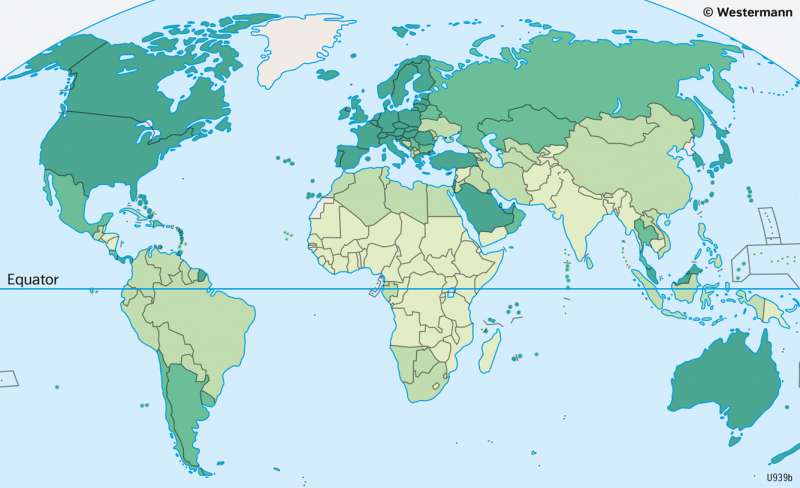The World - Economic output
Economy
978-3-14-100890-6 | Page 46 | Ill. 2

Overview
Gross National Income (GNI) is a widely used standard indicator to compare the economic performance of countries. The gross national income of a year indicates the value of all goods and services produced in that year by companies, authorities, and individuals of a country, both at home and abroad. Thus, for GNI, the place of production is irrelevant.
Another indicator of economic performance, the gross domestic product (GDP) of a period, indicates the value of all goods and services produced during that period by an economy within the national borders of the respective state. It does not matter whether this was done by domestic or foreign companies, authorities, or persons. For GDP - unlike for GNI - the place of production is decisive.
GNI per capita
This alternative map shows the gross national income by capita. Many countries stay on the same end of the scale, especially in North America, Europe, Africa, and parts of Asia. Because of the diverse population in some countries, however, the total gross national income of the country differs completely from the income per capita. Examples are India, China or Brazil, where the population is high and the economic performance varies in different parts of the country. There, the income per capita is much lower than the national income. In Australia, on the other hand, the population density is very small, which leads to a low gross national income of the country but a high gross national income per capita.




